
For 19-year-old Stefani Germanotta, a little-known but scarily ambitious New York University dropout turned pop singer desperate to make a name for herself in the hipster club circuit of Manhattan’s Lower East Side, it was a pivotal moment. There she was, ready to sing some of her hot new material in a dingy dive, dressed to the max — a carefully calibrated mix of American Apparel promiscuity and Bride of Frankenstein weirdness. She downed a few drinks. She was ready. But the blasé crowd didn’t seem to care: they never stopped talking, barely mustering a glance at the stage. Enough, she thought. Without missing a beat, she peeled off her clothes, sat back down at the piano in a skimpy bra and panties, and started her set.
Everyone shut up and listened. And they haven’t stopped listening since.
Years later, Stefani, now better known as Lady Gaga—the biggest, wildest, least predictable pop star on the planet—told a reporter that her alter ego sprang to life that night, fully formed. “That’s when I made a real decision about what kind of pop star I wanted to be,” she said. “Because it was a performance-art moment then and there…. Unless you were in the audience in that very spontaneous moment, it doesn’t mean anything. It’s like, she took her clothes off, so sex sells, right? But in the context of that moment, in that neighborhood, in front of that audience, I was doing something radical.”
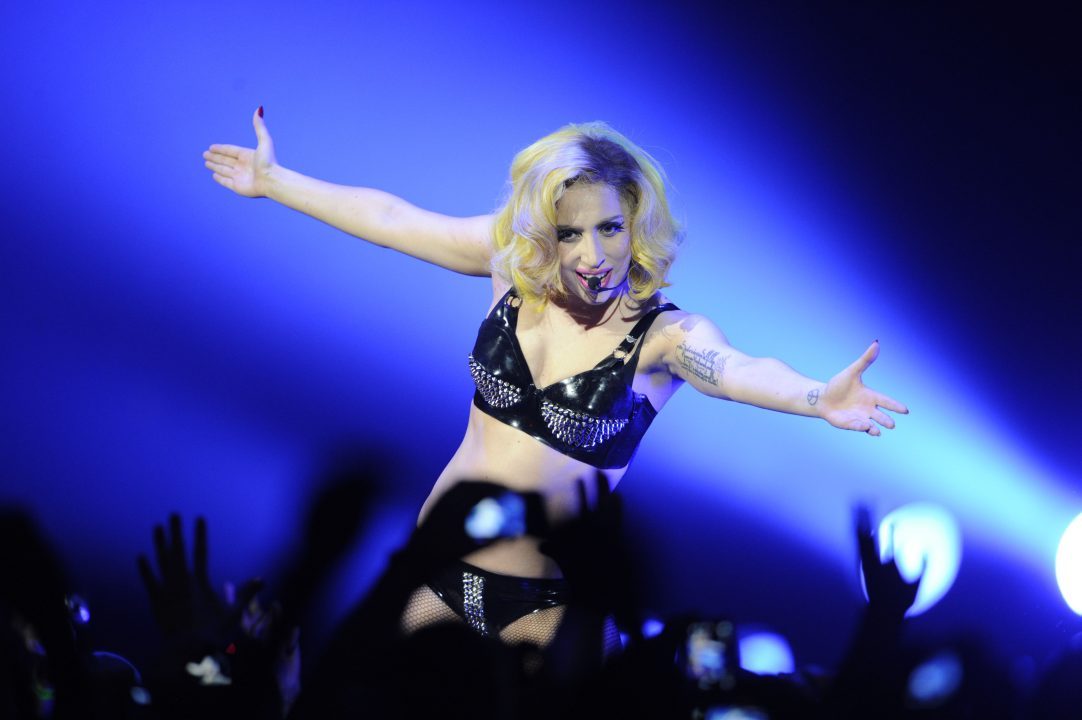
Doing radical stuff has become a big business for Lady Gaga. Meat dresses. Bubble dresses. Meat bikinis. Naked thanksgivings. Flaming pianos. Music videos strewn with corpses, unicorns, and hunky, oiled-up Judases. It all works for her, brilliantly. She’s parlayed an unerring sense for crazy, high concept fashion, insanely catchy dance beats, larger-than-life oddness — and, yes, amazing talent as a singer, songwriter, and musician — into one of the quickest and quirkiest rides to superstardom ever. The numbers have become legendary: 12 straight No. 1 singles on the Billboard dance chart; 32 million twitter followers; more than 23 million albums sold; more than one billion views of her videos on YouTube.
Her fans — little Monsters, as she calls them — are fanatical, and her concerts are huge, meticulously produced extravaganzas. She’s the pop star we needed, the first true superstar of her era. She’s weirdly famous and famously weird. But still, everyone wonders: Who is Lady Gaga, really? And, most intriguing, how on earth did she get that way?
“The goal has never been to be famous,” she says. “My goal has been to be a star.” She succeeded beyond anyone’s wildest imagination. Not surprisingly, trying to separate myth from reality in the astonishing tale of Lady Gaga’s meteoric rise from a nice Upper West Side girl into the biggest star in a generation is a bit like trying to separate a vapor trail from a streaking comet.
Stefani Joanne Angelina Germanotta, born on March 28, 1986, grew up in Manhattan, in a nice, expensive duplex apartment, with loving parents. Her dad, Joseph, was an entrepreneur who made a fortune selling WiFi to hotels. Her early childhood was — dare we say it? — upper-middle-class ordinary. But practically from the time she could talk, one thing set her apart from the other kids in the affluent neighborhood: single-minded, unvarnished ambition.
She started playing classical piano at age four — forced into it first by her mom but soon excelling to the point where her proud parents considered enrolling her in Juilliard. But she opted to take a different road: Catholic school. At age 11, she entered the Convent of the Sacred Heart, a prestigious private school (annual tuition: $35,000; her sister, Natali, six years younger, went there as well). The place had plenty of well-known alumni (including Caroline Kennedy). Still, one student a few years ahead of Stefi made an especially big impression: Paris Hilton, a socialite princess who was already the object of paparazzi fascination.
“She became a bit obsessed with Paris,” says one Gaga friend from her Sacred Heart days. “Stefi was this sweet, slightly pudgy, short, weirdly dressed girl with a perma-tan. And Paris was a blonde goddess. Stefi would watch her, study the way she carried herself.” Years later, Gaga herself admitted: “I am fascinated with the blonde woman as a seductress. There’s a way that these women position themselves in front of the cameras. There’s a real art to fame.”
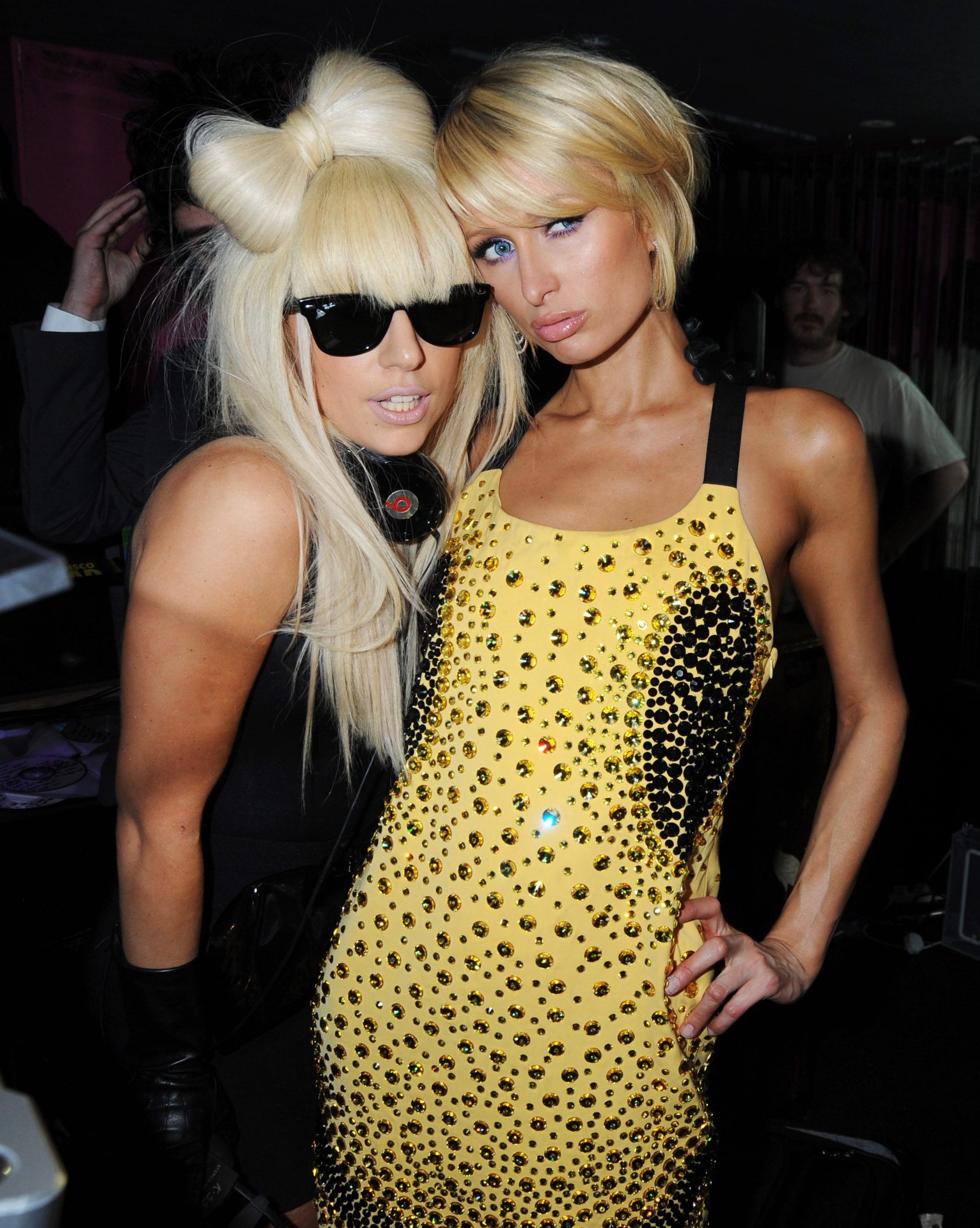
Stefi was not, as she is quick to point out, one of the cool kids in high school. She was an unabashed theater nerd, taking lead roles in school productions of musicals like Guys and Dolls, squeezing in voice and acting lessons in her spare time.
She played piano in school recitals. She went on auditions for TV and movie roles. She dressed in quirky, mismatched clothes. She was, literally and figuratively, a drama queen. Gaga says she suffered some nasty taunting from her classmates — some of whom called her “the Germ” behind her back — and characterizes the period as one that forever cemented her identification with outsiders. She described it in Rolling Stone as “Being teased for being ugly, having a big nose, being annoying, right? ‘your laugh is funny; you’re weird; why do you always sing; why are you so into theater; why do you do your makeup like that; what’s with your eyebrows…. Why do you have to look like that for school?’ I used to be called a slut. I didn’t even want to go to school sometimes.”
But some of her former classmates remember it differently. “She was really a pretty popular kid,” says her high school pal. “She had a core group of good friends. And everyone knew her as the most talented one in the place.”
Either way, she escaped more and more into her dreams of stardom. She started writing music, emulating the classic rock that her Baby Boomer parents loved — Billy Joel, Pink Floyd, the Beatles — and formed a band with her classmates. She began entering open-mic nights at local bars, always accompanied by one of her doting parents. But she left mom and dad behind to get a taste of the burgeoning, fashion-forward downtown and Manhattan nightlife on weekends. She began dressing more and more provocatively, making the most of her curvy, 5’1″ frame (“she was very big on cleavage,” her friend recalls); she got a fake ID and started sneaking into clubs on the Lower East Side. It was a world of avant-garde artists, musicians, actors, drag queens, freaks, and geeks. It all made a big impression on the little uptown girl, one that would help form her worldview, fashion sense, sense of who she was, and what she wanted to be.
She graduated high school early, then enrolled in New York University’s well-regarded Tisch School of the Arts. Living in a dorm — on her own for the first time, at 17 — she became a regular fixture on the downtown scene. She fit in just fine at school, where she started focusing on the work of convention smashing modern artists like Spencer Tunick (known for photos of large groups of naked folks in public places) and Damien Hirst (famous for art pieces comprising dead sharks and cows, preserved in formaldehyde). She loved how they shocked people, engaging some, enraging others. At the same time, she immersed herself in the work of glam-rock stars like David Bowie, Queen, and Grace Jones. She began envisioning a new type of pop singer who combined performance art, modern music, theatrics, and sex in one intoxicating brew. The pull of stardom grew even stronger.
After a year, she’d had enough — she had to take her shot. Nervously, Stefi approached her dad to tell him she was quitting school to pursue her dream. Joseph surprised her with a counter proposal: he would financially support her for one year as she made a grab for stardom. After that, she was on her own. (In a highly unusual arrangement, she and her dad would reportedly come to sign a contract to split all her future earnings 50/50.) She rented a small walk-up apartment on the Lower East Side and began working full-time on her music, her look— everything. She had a year to make something happen. And the clock was ticking.

It is said failure is an orphan, but success has many fathers. If that’s true, then few have had more fathers than Lady Gaga. She met one of them shortly after moving to the Lower East Side. She’d been touring lousy downtown bars with her lousy lo-fi rock band formed with some friends from NYU, mostly playing to tiny, disinterested crowds. The music was standard Fiona Apple–type singer/songwriter stuff, and the stage act was unmemorable. Still, she had … something. One person who noticed it right away was a singer and burlesque queen named Lady Starlight. She was a decade or so older, and she was at the apex of the downtown art scene. She knew all the players; she knew the hottest clubs and most exclusive parties. “I wanted to bring [Gaga] into my world,” she told the New York Post. She helped Stefi copy her look: heavy makeup; torn fishnets; huge, spiky heels; lots and lots of skin.
Lady Starlight also introduced young Stefi to the world of hipster burlesque dancing. Together, they made the rounds with a wild act that was half performance art, half strip show: dancing on stage in thongs, singing songs about oral sex, and lighting cans of hairspray on fire. Not everyone was a fan. “My parents couldn’t look at me for months,” she said.
She has characterized this as her wild period, one filled with cocaine and a slew of wildly inappropriate relationships with older men. Eventually, she would meet Lüc Carl, a self-fashioned “heavy metal drummer” who was tending the bar at a hipper-than-thou Lower East Side hotspot. A handsome, well-muscled dude prone to leather vests without shirts and a world-class mullet, he was her on-again, off-again boyfriend for years — and became the inspiration for many of her early songs. But two of the relationships from this period that would wind up having the most significant impact on her life and career happened by pure chance. One of her small gigs was seen by Wendy Starland, a singer who was friends with Rob Fusari, the 38-year-old producer known for crafting dance hits for Destiny’s Child and Whitney Houston. Fusari had asked Starland to help him find a singer under 25 to front a band, someone an audience wouldn’t want to take their eyes off of. He was looking for a once-in-a-lifetime star.
Bursting with excitement, Starland called the producer minutes after seeing Stefi onstage.
“Why are you waking me up?” he asked.
“I found the girl,” she replied.
A meeting was set up. Fusari wasn’t bowled over at first. He’s been quoted as saying Stefi looked “totally Jersey Shore…like something out of Goodfellas. She was a little overweight. She looked like she was ready to make us pasta.” But he took a 180-degree turn once he heard her sing and play the piano. Fantastic voice, great keyboard skills, awesome stage presence, so-so songs, he thought. Maybe, just maybe, this was the star he was looking for.
They worked on writing and recording rock songs for months, but they didn’t seem to be gelling; the earnest singer/songwriter mode didn’t fit. Fusari recommended that Stefi switch to a far more popular genre, one that would be far more saleable to record labels: beat-heavy dance music. She fought it at first — after all, she was a rock’ n’ roll chick at heart. But it was a eureka moment, and she never looked back. She merged the flamboyant songcraft of Queen or Bowie with dark, propulsive Eurodisco beats and state-of-the-art production. It may not have been thought-provoking, but it was sexy, accessible, and almost frighteningly catchy.
Eager for a full star makeover, Stefi Germanotta no longer felt like a Stefi Germanotta. She has said that the name Lady Gaga came from a text sent to her from her producer, in which “radio Ga Ga” — one of her favorite Queen songs, and a nickname he had for her — was mistakenly autocorrected to “Lady Gaga.” Wendy Starland says it was the product of marketing discussions. Either way, Stefi ceased to exist. From this point forward, she was Lady Gaga.
The first big breakthrough happened shortly after that. In late 2006, one of her new songs, “Beautiful, Dirty, Rich,” made its way to Island Def Jam, a label specializing in hip-hop and R&B, and its CEO, L.A. Reid, the guy who helped make Kanye West and Mariah Carey (and later Justin Bieber) into mega successes. Reid wasn’t quite sure what to make of Gaga, but he decided to take a chance. “LA told me I was a star,” Gaga recalled. And he backed up his words with cold, hard cash: reportedly an $850,000 contract, an almost-unheard-of sum for a new artist. Gaga was on her way.
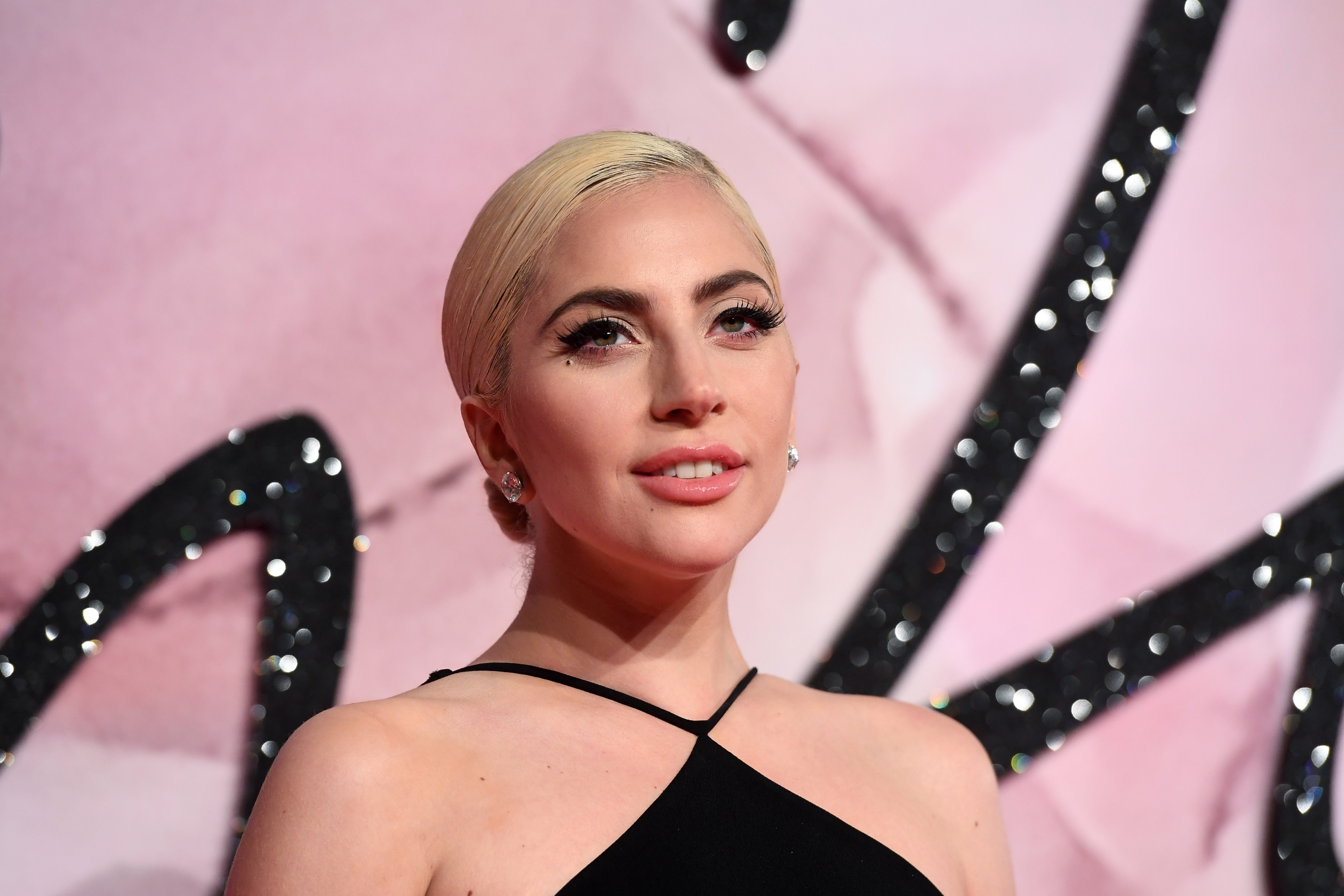
Unfortunately, Lady Gaga’s first taste of real success was short-lived. In the panic-ridden, ever-shrinking post-iTunes music industry, fortunes shift with the wind. Only three months after he signed her to his label, L.A. Reid sat with some of his top execs in an Island Def Jam conference room and listened to a few of Gaga’s newest tracks. According to those present, Reid leaned back and made a slitting motion across his throat.
And just like that, Gaga’s contract was dropped.
She did what most 20-year-old girls would have done: she retreated to her apartment and cried for days. It was a devastating blow, the first time she allowed herself to think that maybe she wouldn’t be a star after all. She ate junk food. She wallowed in depression. She watched monster movies on TV. But then something happened: she got angry. And she became even more laser-focused than ever. As she told New York Magazine years later: “That’s when I started the real devotion to my music and art.” She continued to refine her music, her ever-more-flamboyant stage show, and outfits — even her figure.
Always a bit on the chunky side, Gaga cut down on the pizza and pasta — her twin demons — and joined a gym for the first time. Before long, she lost 15 lbs. and threw herself into a new, critically acclaimed burlesque show with Lady Starlight.
A music-biz dictum says that true talent can’t be contained for long, and that’s certainly true in the story of Lady Gaga. Her producers were still knocking on record-label doors, and in mid-2007, Gaga got a meeting with Jimmy Iovine, the legendary head of Interscope Records. The Brooklyn-born Iovine is famous for having the best ear in the business — one that detected the early potential of stars ranging from U2 to Eminem. Gaga showed up for her first meeting wearing mini shorts, go-go boots, and a tiny cutoff top.
According to one source, the Interscope folks weren’t sure that Gaga was pretty enough to be a headline act. So, at the same time she was recording new songs with one of the label’s top producers, Interscope had her writing tunes for some of their other artists, including Britney Spears and the Pussycat Dolls.
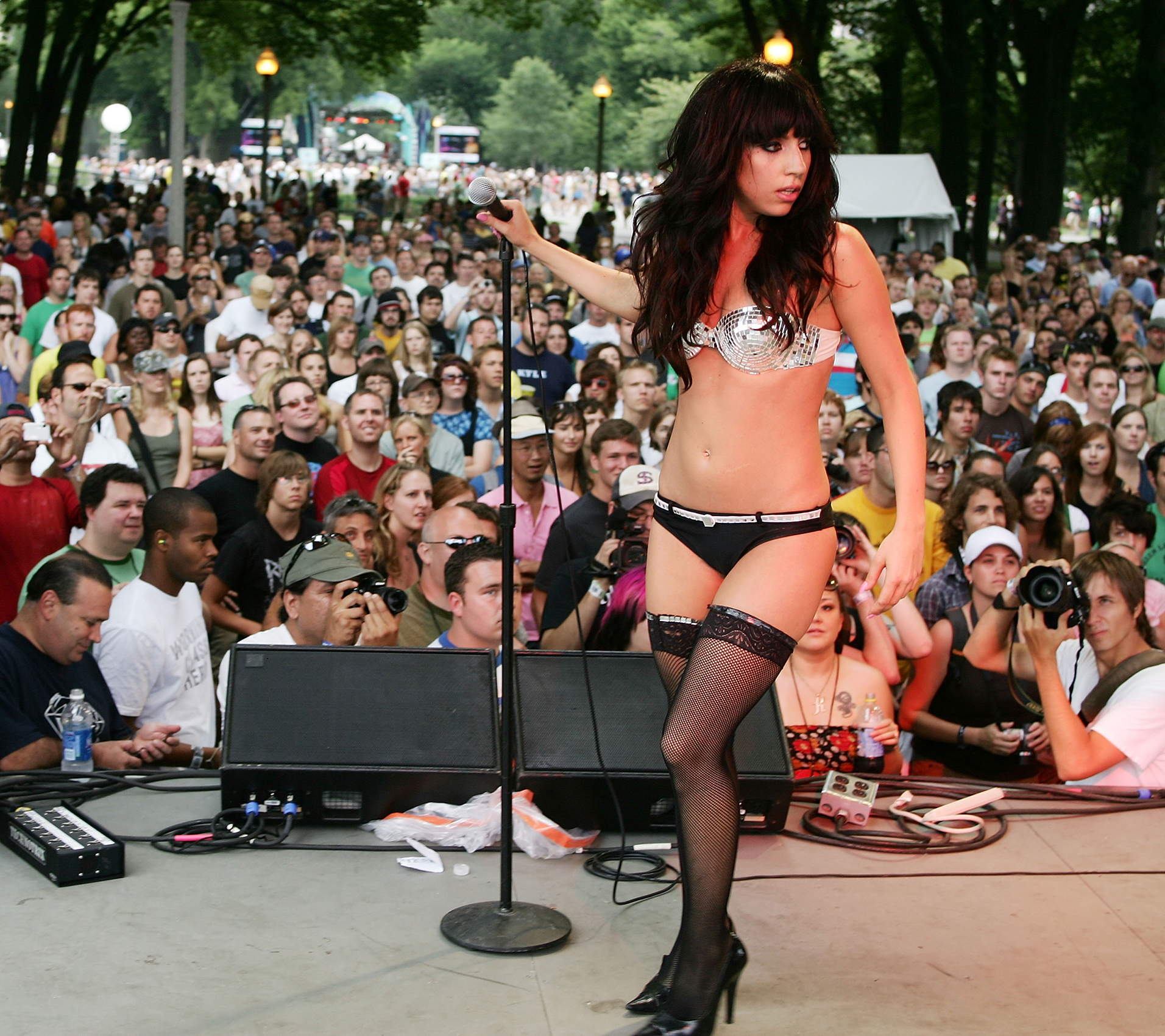
Meanwhile, the label cranked up the star-development machine. She was set up to play at Lollapalooza, the enormous multi-day outdoor rock festival. But it didn’t go particularly well. Playing one of the smallest stages, her music system was faulty, and the stage bounced every time she moved. Worse still: swarming reporters thought she was Amy Winehouse. With her Goth look and brunette bouffant, Gaga looked like Amy’s evil twin. Interscope executives told her that she should dye her hair platinum blonde. She did. Everything was finally starting to click.
Everything, that is, but Gaga’s love life. As one of Lüc Carl’s buddies explains: “Lüc is a rock’ n’ roll guy, and he really doesn’t like pop. As [Gaga] became more successful, he began to look down on her for choosing to make dance music.” During one of the last of their epic, drama-filled breakups (she has compared their relationship to Sandy and Danny, the main characters from Grease), she told Lüc, “Someday, when we’re not together, you won’t be able to order a cup of coffee at the f*cking deli without hearing or seeing me.”
After Akon, one of Interscope’s biggest stars heard tracks from Gaga’s soon-to-be-released debut album, the fame, he urged the label to throw all its marketing and development muscle behind the new artist. They hired a top choreographer to work on her dance moves; theatrical experts to help transform her eccentric live shows into flashy, sexy, high-tech masterpieces; and stylists, including the much-sought-after Nicola Formichetti, to elevate and conceptualize her look. “[The Interscope executives said,] “‘You look like a stripper,'” Gaga told New York Magazine. “I said: ‘Is this the only major label on planet Earth that is asking a female pop artist to put more clothes on?'” She moved to Los Angeles to work more closely with her creative team, which she dubbed Haus of Gaga, envisioning it as a modern version of Andy Warhol’s factory.
In late summer 2008, her debut album was released and slowly began making its way up the charts — led by wildly addictive singles like “Just Dance,” about getting trashed in clubs, and “Poker face,” about bisexuality (Gaga says that both songs are based on her own experiences). She crossed the US, touring nonstop: gay clubs, cowboy joints, Top 40 clubs, you name it. Every night, it was a new city.
Then, Interscope gave Gaga her first taste of bigger venues, booking her as the New Kids’ opening act on the Block’s US tour, then the Pussycat Dolls’ tour in Europe. According to sources, she didn’t get along too well with either band. “Here is this chick dressed like a disco alien, wanting to do these elaborate sets with half-naked male dancers and weird props and video screens,” says one person who worked on both tours. “No one knew what to make of her.” More to the point, jealousy reared its ugly head when Gaga began to outdraw the headliners. By the end of the Pussycat Dolls tour, her album was nearing No. 1 on the UK charts, and she was becoming a bona fide sensation. She started taking off in the US as well. Her singles were in heavy rotation; there were Grammy nominations and a series of increasingly outrageous TV appearances. She launched The Fame Ball Tour across America, her first major-venue headlining tour. She created music videos that harked back to the heyday of Michael Jackson. And, most notoriously, she spewed blood in her number at the 2009 MTV Video Music Awards.
Suddenly Gaga was everywhere.

Since then, life has played out like a fever dream that might have been experienced by a young Stefi Germanotta, fantasizing about superstardom in her parents’ uptown duplex, like performing at the NFL’s famed Half-Time Show.
At the end of 2009, there was another album, the Fame Monster, which quickly shot to No. 1, and she kicked off The Monster Ball Tour, a colossal, international-arena show that continued for more than a year and a half and snared $227 million — one of the highest-grossing tours in history. (But not one of the most profitable; a cross between Cirque du Soleil and the seventh circle of Hell, the evolution-themed production cost so much to mount that it lost money). Born This Way, her third album was released in 2011. Not only was it a massive hit, but its title song became a rallying cry for the gay community, one that Gaga has actively supported over the years. Elton John called it “the gayest song ever.”
In 2013, she wrapped up her third huge global tour and released an eagerly anticipated new album, Artpop.
But even in the hermetically sealed, carefully engineered life of Lady Gaga, not everything is fresh-cut roses and frolicking unicorns. There have been troubling recent accounts of continuing battles with weight, including an all-too-apparent 25-lb. gain in 2012. Her record label ordered looser-fitting outfits for the remainder of her tour and told her to work off the poundage. Another health issue: Gaga has tested borderline-positive for Lupus, the disease that killed her aunt at an early age. And there have been legal woes as well, including a $30 million lawsuit from the former producer and songwriting partner Rob Fusari, claiming that he was largely responsible for her success and demanding a bigger chunk of the spoils. The case was eventually settled.
“My ride through the industry was an interesting one because people loved me, but there was a very big raised eyebrow about me,” Gaga told one reporter after the suit. “And as soon as I took off, it was like, ‘I invented her, I made her, I wrote the music.’ When in reality, I am completely self-invented.” Others would disagree with that.
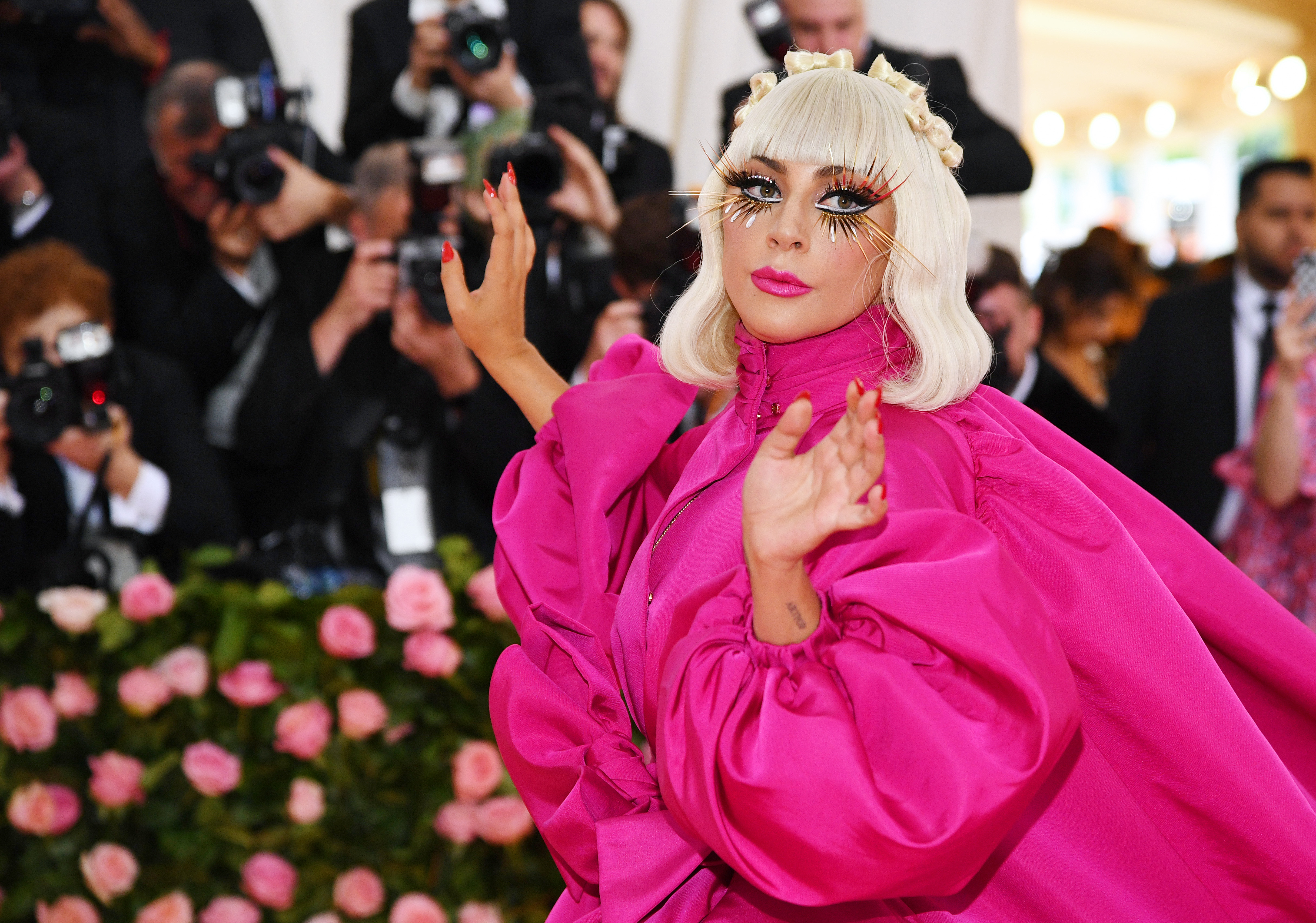
Madonna, especially, seems in virtually every way (except for her self-seriousness and faux Brit accent) to be a prototype for Gaga — the Catholic, Italian-American background; the lower East Side gay-club roots; the pulsing dance tunes; the taboo-breaking videos; the sex; even the ever-morphing costumed personas. Many have noticed the striking similarities between “Born this way,” and Madonna’s 1989 hit “Express Yourself.” Madge, publicly at least, has taken the high road. “When I heard [‘Born This way’] on the radio, I said, ‘That sounds very familiar.’ It feels reductive,” she said on 20/20. “I certainly think she references me a lot in her work…. There’s a lot of ways to look at it. I can’t really be annoyed by it because, obviously, I’ve influenced her.”
Not every pop star is so charitable. Fellow glam-art rocker Grace Jones told UK’s The Guardian, “Well, you know, I’ve seen some things she’s worn that I’ve worn. And that does kind of piss me off.” MIA has said of Gaga: “She’s not progressive, but she’s a good mimic. She sounds more like me than I f–king do! She’s the industry’s last stab at making itself important.” Even Katy Perry called one of her videos “blasphemous.”
Gaga takes it all in stride.
As for Stefi? She has completely ceased to exist. Like Norman Bates at the end of Psycho, the fictional alter ego has overtaken the real person. These days, Gaga is never seen in public without her full stage makeup and freak-chic disco outfits. In her downtime, she obsessively surfs the web, reads stories about herself, or watches her beloved monster movies and Family Guy reruns. But she stays in character, according to those who know her, even in private.
“Lady Gaga is my name,” she has said. “If you know me and you call me Stefani, you don’t really know me at all.”













